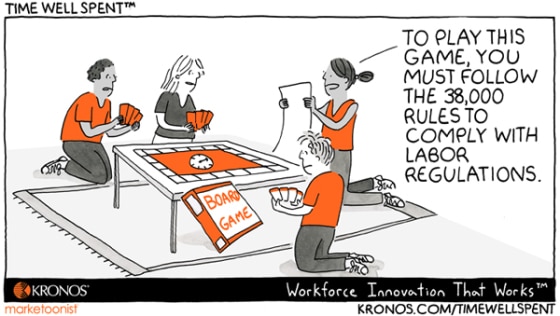Let Your Employees Know the Rules – Friday Distraction
Today’s media has a lot of talk about rules. Specifically, about breaking rules. Remember the Marcus Buckingham book “First, Break All the Rules”? In a world where disruption is often truly valued, knowing how and when to break the rules is essential.
And that’s the key – knowing how and when. Whether it’s one rule or a few thousand, today’s Time Well Spent from our friends at Kronos reminds us that every once in a while, we have to abide by the rules. If you want people to follow the rules, there are some basic things that need to happen.
Set expectations. This sounds so obvious, but in my experience, it doesn’t happen as often as it should. Rules, policies, procedures, guidelines, etc. must be communicated. Think about when employees need to know information and share the rules with them. It might be at orientation or during a training session.
Don’t assume. Organizations should not hand employees a binder of rules and assume they will read them all word for word. The reason they won’t isn’t because they don’t care. It’s because handing someone a binder of rules looks like the company doesn’t care. Organizational rules that are explained and discussed will come across as most important.
Explain the WIIFM. When it comes time to explain a rule, employees should understand why the rule is important to them (i.e. WIIFM = What’s in it for me?) People will follow rules when they know the reason it impacts them. And “because I said so” just isn’t good enough.
Disclose the consequences. In addition to sharing the reasons why employees should care about a rule, tell them what will happen if the rule is broken. On the front end. That way, if the rule is broken, the employee understood the consequences before taking action.
I realize there’s a quote that it’s “easier to ask for forgiveness than it is to get permission”. I’ve used that line before – more than a few times. But always when I thought I could get away with it. Meaning, I knew the rule, I understood how it impacted me, and I knew the consequences of breaking it.
When employees don’t have that information, it’s not fair to them. They’re being asked to assume consequences they don’t know for a rule that they’re unsure about. Rules aren’t as bad as they seem sometimes. We need them for safety and security. But the only way rules work is when everyone knows and understands them.
13